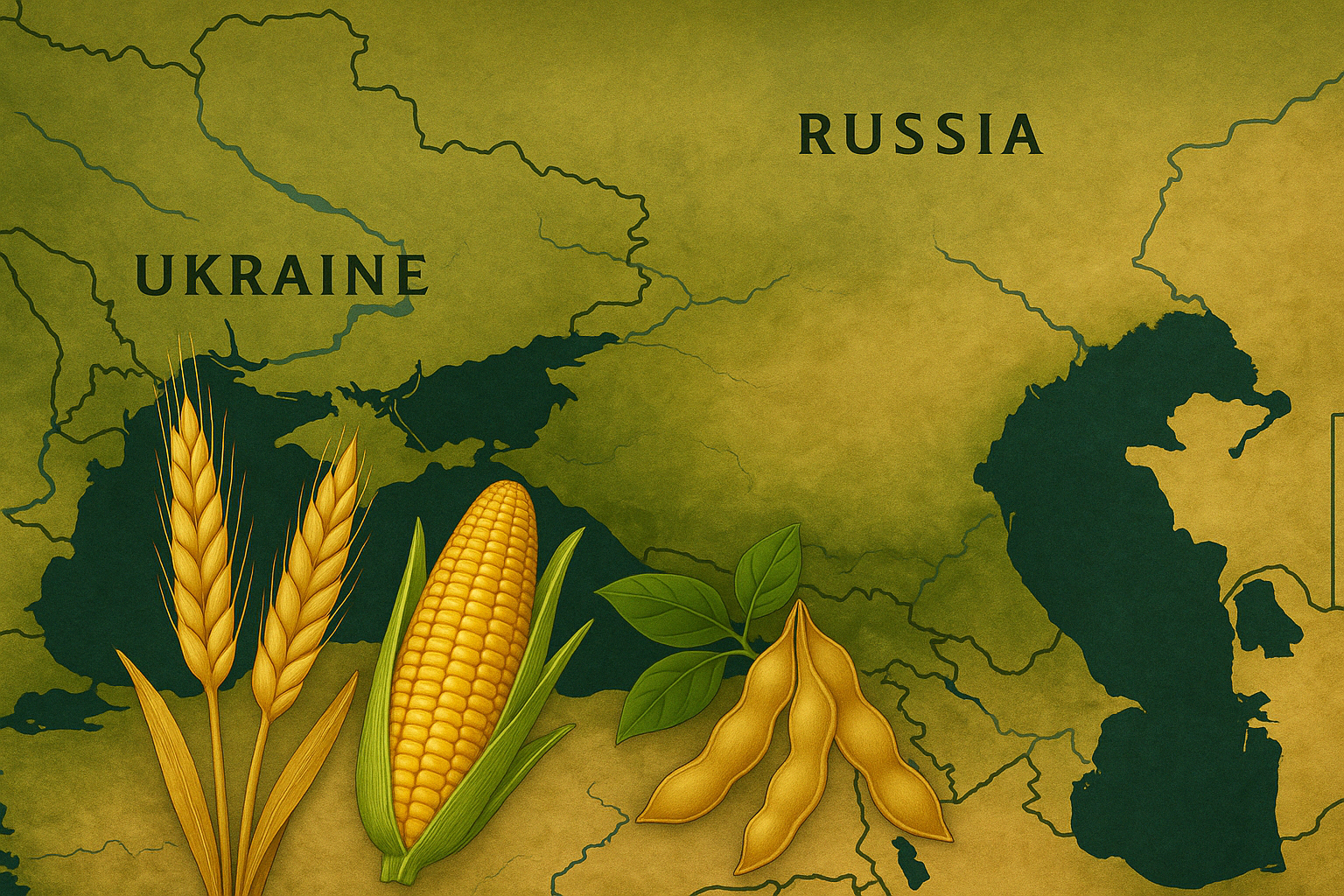Ukraine: Recovery in Exports Amid Military and Market Constraints
Ukraine’s grain producers are enjoying relatively improved profitability this season, with average grain prices rising by nearly 50% compared to the previous season. Corn, in particular, has led the way, driving plans for a 4–5% increase in acreage. Sunflower plantings are also on the rise, spurred by strong global demand and a price surge of up to 60%. Soybeans, however, have lost attractiveness due to global overproduction and weak returns.
Looking ahead, if conflict disruptions remain limited and weather conditions hold, Ukraine’s 2025 harvest could exceed last year’s by 5–10%. Forward pricing is already 20–35% higher, suggesting a strong export season and a valuable economic cushion for the country. However, access to maritime corridors remains vital, with port functionality continuously threatened by military risks.
Russia: Tight Supplies, Rising Prices, and Export Restraints
Russia’s wheat outlook for 2025/26 has rebounded significantly. Following early concerns over inadequate winter rainfall, timely rains improved soil moisture and helped crops emerge from dormancy in solid condition. Argus Media forecasts Russian wheat production at 84.87 million tonnes, up 4.4% year-on-year. While planted area is slightly reduced and yields may be modestly below average, overall output is expected to surpass last year’s.
Export dynamics remain sensitive. Russia’s wheat shipments surged early in the 2024/25 season but slowed in the second half, leaving minimal carryout stocks. The ruble’s strength and restrictive export quotas are supporting domestic prices, even as global wheat futures dip. Russia’s limited remaining supplies for export contrast with anticipated import demand from North Africa and South Asia, contributing to firm market sentiment.
Romania: Export Powerhouse and Infrastructure Expansion
Romania has emerged as a top grain exporter in the EU. Between July 2024 and April 2025, it exported over 7.1 million tons of grain, led by soft wheat (4.7 million tons) and barley (1.6 million tons). Key destinations included Egypt, Saudi Arabia, and Jordan. Corn exports were smaller but still significant, with Turkey, Israel, and Lebanon as primary buyers.
The country is also positioning itself strategically in the region by seeking to acquire a majority stake in Moldova’s Giurgiulești port. This critical infrastructure would grant Romania more direct control over river and maritime routes, potentially boosting logistical efficiency and regional influence. Modernization plans include dredging, new silos, and improved rail connections.
Wheat Production: Regional Rebound with Diverging Conditions
Winter wheat across the Black Sea region is benefiting from weather improvements. Ukraine is forecast to produce 23.68 million tonnes in 2025/26—a 6.2% rise—driven by increased planted area rather than better yields. Conditions have improved in central and eastern Ukraine but worsened in the west. The south remains favorable.
Romania is likely to achieve a record wheat harvest of 11.54 million tonnes, a 13.9% increase, with excellent vegetative density and positive feedback from local farmers. Analysts consider this year’s wheat conditions among the best observed in Argus Media’s crop tours.
The broader region is well-positioned to meet rising global demand, especially as countries like Pakistan, Iran, and Turkey face weaker domestic harvests in 2025/26. Combined import demand from North Africa, the Middle East, and South Asia is expected to rise sharply to 57.8 million tonnes, up from 47.8 million tonnes this year.
Corn Outlook: Tight Supply and Slow Export Pace
Ukraine’s corn market faces dual dynamics: improved pricing but lagging exports. The 2024/25 harvest was the smallest since 2015/16 at 23.9 million tonnes due to heat and drought. Prices have risen to match those of French milling wheat, but export volumes remain well below the five-year average. USDA estimates 22 million tonnes for 2024/25, but Argus forecasts only 19 million.
As of March’s end, just six million tonnes remained available for export, indicating a likely slowdown. Compounding matters, the U.S. is undercutting Ukrainian corn in EU markets, securing 16% of EU imports so far—signaling a shift in regional trade dynamics.
Black Sea Region on the Rebound, But Fragile
The Black Sea grain market shows signs of a robust rebound in 2025/26. While production forecasts for wheat are broadly positive, and export volumes from Romania and Ukraine are climbing, the region is still navigating major risks: port infrastructure, military stability, and global competition.
With improving weather, rising prices, and new infrastructure ambitions, the region is regaining strength. Yet the balance remains delicate—especially for Ukraine and Russia, where export reliability, policy restraints, and weather remain tightly interwoven with global grain stability.

